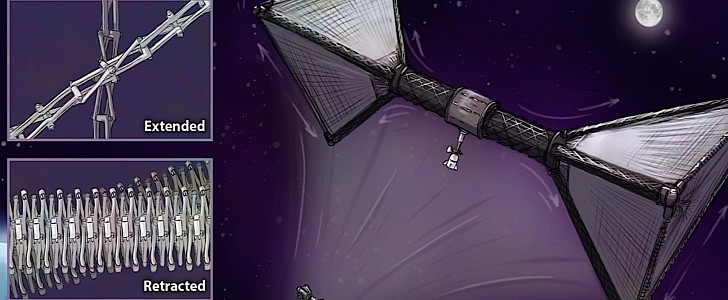For space exploration enthusiasts, there never was a better time in the world's history to be alive than now. Not only are we witnessing the birth of wonderful technologies, but we’re also living in the age the history books of the future will celebrate as the one when humanity’s expansion in the galaxy began.
Dreams of such a future are now more anchored in reality than they ever were. But this doesn’t mean there are not immense challenges ahead.
One of the biggest such hurdles is gravity. Sure, humans can go about exploring the solar system or living on the space station without experiencing gravity, but its absence is not at all viable for long-term missions. That’s because the lack of gravity causes things like muscle atrophy, bone loss, and immunosuppression.
Presently, humans have no practical way of generating gravity in space. The simplest solution would be to have space structures rotate, but given how small in size they presently are, a rotating module would cause motion sickness and other unwanted effects.
To circumvent that and to bring down the number of rotations per minute needed to generate 1g, we would have to build really large structures. But that raises yet another set of barriers, as we’d have to send countless missions up there until the structure is assembled.
A team from the Carnegie Mellon University in Pittsburgh, led by Zachary Manchester, has another idea, one that is so out of this world NASA chose to fund through the NASA Innovative Advanced Concepts (NIAC) program.
The idea calls for the use of “metamaterials to design lightweight deployable structures with unprecedented expansion ratios of 150x or more.“ For reference, metamaterials are engineered to have properties that are not present in naturally occurring materials.
On Earth, the structure would be small enough to fit inside the fairing of a single Falcon Heavy rocket, Manchester says, but once up in orbit, it would expand “to a final size of a kilometer or more [...] without requiring complex on-orbit assembly or fabrication.” The structure would form the backbone of a huge rotating space station.
So far, the idea is just in its study stage. As with all the ideas in the NIAC, NASA says it may never come to pass.
One of the biggest such hurdles is gravity. Sure, humans can go about exploring the solar system or living on the space station without experiencing gravity, but its absence is not at all viable for long-term missions. That’s because the lack of gravity causes things like muscle atrophy, bone loss, and immunosuppression.
Presently, humans have no practical way of generating gravity in space. The simplest solution would be to have space structures rotate, but given how small in size they presently are, a rotating module would cause motion sickness and other unwanted effects.
To circumvent that and to bring down the number of rotations per minute needed to generate 1g, we would have to build really large structures. But that raises yet another set of barriers, as we’d have to send countless missions up there until the structure is assembled.
A team from the Carnegie Mellon University in Pittsburgh, led by Zachary Manchester, has another idea, one that is so out of this world NASA chose to fund through the NASA Innovative Advanced Concepts (NIAC) program.
The idea calls for the use of “metamaterials to design lightweight deployable structures with unprecedented expansion ratios of 150x or more.“ For reference, metamaterials are engineered to have properties that are not present in naturally occurring materials.
On Earth, the structure would be small enough to fit inside the fairing of a single Falcon Heavy rocket, Manchester says, but once up in orbit, it would expand “to a final size of a kilometer or more [...] without requiring complex on-orbit assembly or fabrication.” The structure would form the backbone of a huge rotating space station.
So far, the idea is just in its study stage. As with all the ideas in the NIAC, NASA says it may never come to pass.

